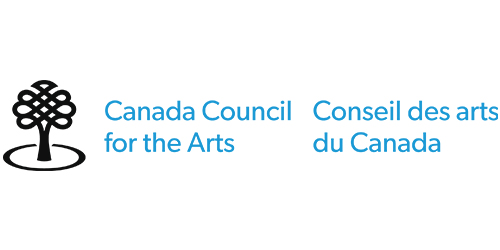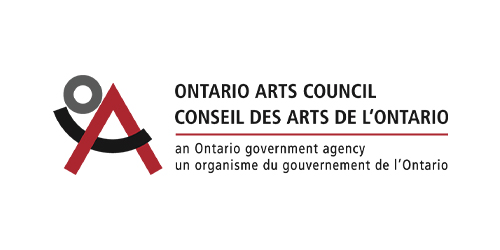Tafelmusik Baroque Orchestra
Leila Schayegh, guest director & violin soloist
Filmed at live concerts May 2023
at Jeanne Lamon Hall, Trinity-St. Paul’s Centre
Program
Jean-Féry Rebel
1667–1747
Les Éléments (1737)
Le Cahos (Chaos)
Les Éléments (The Elements)
La Terre et l’Eau (Earth & Water)
Chaconne: Le Feu (Fire)
Ramage: L’Air (Birdsong: Air) – Rossignols (Nightingales)
Loure: La Chasse (The Hunt)
Tambourins
Sicilienne
Air pour l’Amour (Air for Cupid)
Caprice
Jean-Marie Leclair
1697–1764
Concerto for violin in E Minor, op. 10, no. 5 (c.1740)
Allegro ma poco
Largo
Allegro
Intermission
Jean-Philippe Rameau
1683–1764
Suite from Les Indes galantes (1735) & Dardanus (1739)
Ouverture
Entrée des quatre nations (Entrance of the 4 nations)
Menuets
Deux Airs pour les Persans (2 Airs for the Persians)
Air pour Borée et la rose (Air for Boreas and the rose)
Air pour les Africains (Air for the Africans)
Rigaudons
Tambourins
Marche pour les Persans (March for the Persians)
Prélude pour l’adoration du soleil (Prelude for the adoration of the sun)
Danse du Grand Calumet de la Paix (Dance for the Peace Pipe Ceremony)
Chaconne
Tafelmusik Baroque Orchestra
Violin 1
Leila Schayegh, Patricia Ahern, Geneviève Gilardeau, Christopher Verrette, Cristina Zacharias
Violin 2
Johanna Novom, Louella Alatiit, Valerie Gordon, Julia Wedman
Viola
Brandon Chui, Emily Eng, Patrick G. Jordan, Christopher Verrette
Violincello
Michael Unterman, Keiran Campbell
Double Bass
Alison Mackay
Flute/Piccolo
Grégoire Jeay, Alison Melville
Oboe
John Abberger, Marco Cera
Bassoon
Dominic Teresi, Stephanie Corwin
Percussion
Ed Reifel
Harpsichord
Charlotte Nediger
Program Notes
By Charlotte Nediger
Rebel Les Éléments
A violinist in the French court orchestra, Les 24 Violons du Roy, Jean-Féry Rebel held numerous positions at Versailles, gradually also gaining prominence in Paris. His fame there rested on his simphonies de danse, a genre he invented apparently quite by chance, as recounted by the 19th-century musicologist Castil-Blaze in L’Académie impériale de musique:
He had written a Caprice for violin that gave infinite pleasure at the Concert Spirituel. Mlle Prévost [the leading dancer at the Paris Opera] wanted to tread a measure, which she based on Rebel’s brilliant solo. This novelty proved a great success, and the Caprice became the favourite dance step among amateurs. For half a century no female dancer found favour with the general public without first having proved herself in this Caprice.
This was the first simphonie de danse, a choreographed “symphony” independent of the opera or ballet. Rebel went on to compose several more such symphonies, the last and most famous of which was Les Éléments. The dance suite, without the opening movement Le Cahos, was premiered in 1737 with great success. A year later Rebel added a symphonic introduction to the suite: the novel effects used by Rebel in Le Cahos were applauded by critics and audiences alike, and continue to surprise our somewhat jaded ears almost 300 years later. The effects are described by Rebel in his introduction:
The introduction of the Symphony was natural; it was Chaos itself, that confusion which reigned among the Elements before the moment when, subject to invariable laws, they assumed the place prescribed for them within the natural order.
In order to describe each Element in turn within this confusion I have availed myself of the most widely accepted conventions.
The bass represents the Earth through tied notes quaveringly played; the flutes imitate the flow and babble of Water by means of ascending and descending cantabile lines; the Air is depicted by sustained notes followed by cadenzas played on the piccolos; finally the violins represent the activity of Fire with their lively, brilliant runs.
These distinctive characteristics of the Elements may be recognized, separate or merged together, in whole or in part, in their various appearances in what I call Chaos, each of which indicates the efforts made by the Elements to free themselves from one another. At the seventh appearance of Chaos these efforts diminish as order finally asserts itself.
The initial idea led me somewhat further. I have dared to undertake to link the idea of the confusion in harmony. I have risked beginning with all the notes sounding together, or rather all the notes of the scale played as a single sound. These notes then develop, rising in unison in the progression which is natural to them and, after a dissonance, end in a perfect chord.
The opening chord of Le Cahos, described above, may well be the first notated orchestral tone cluster in music history. Le Cahos is followed by the original simphonie de danse, beginning with a depiction of each element in turn, followed by a sequence of dances and airs, and ending with a virtuoso caprice.
Leclair Concerto for violin
During the early 18th century, French musicians spent considerable time debating the merits of the French versus Italian styles of composition and performance. Jean-Marie Leclair was one of the most successful of the generation of French musicians who sought to unite the two styles. An accomplished violinist (also dancer and lacemaker!), Leclair travelled to Turin to study the Italian style of violin playing with Somis, a student of Corelli. He returned to Paris and quickly rose to fame, credited in retrospect for founding the French classical school of violin playing. His compositions, almost entirely devoted to works for the violin, are original in style and technically demanding, combining Italian brilliance with French refinement and grace. He published two volumes of concertos, with six concertos in each volume. The second volume, Opus 10, was beautifully engraved by his wife, and was dedicated to Dom Philippe, Infante of Spain, who had recently married Louise-Elisabeth, the eldest daughter of Louis XV. The Infante was apassionate music lover, and played cello and pardessus de viole. Leclair’s dedication notes: “Great princes are distinguished by a taste for talent and for the arts, and by an inclination to protect them; you love these things, Your Highness, as an informed connoisseur, and the desire for glory with which you are imbued insures that you will protect them.”
Rameau Les indes galantes
Jean-Philippe Rameau astonished the Parisian public in 1733 when, at the age of 50, he presented his first opera, Hippolyte et Aricie. André Campra, the leading opera composer at the Paris opera, said of the first performance, “My Lord, there is enough music in this opera to make ten of them; this man will eclipse us all.” For his second foray into stage music two years later, Rameau turned to the form made popular by Campra, the opéra-ballet. The convoluted plots of the grand mythological tragedies are replaced in the opéra-ballet by a loosely structured series of tableaux linked by a general theme. Rameau was specifically inspired by Campra’s L’Europe galante, which had premiered four decades earlier but was still enormously popular. It comprised four acts, depicting in turn the characteristics of the French, Spanish, Italians, and Turks. The thread that links the four acts of Rameau’s Les Indes galantes is the 18th-century notion of the “exotic,” prevalent in art, fashion, and at the theatre. Each act presents a tale of love and intrigue in a distant land, the Indies in this case represented by Turkey, Peru, Persia, and North America. The whole is preceded by a prologue extolling the universal power of love. The work quickly became as popular as that of Campra’s model, and between 1735 and 1773 it was performed no fewer than 320 times at the Royal Academy of Music in Paris.
In the complete opéra-ballet there are some 90 minutes of instrumental music. For this week’s program we have selected a suite of dances and scene music from each of the five sections. Young lovers from Italy, France, Spain, and Poland dance the minuets and entrées of the prologue, and a troupe of Turkish sailors dancing the lively rigaudons and tambourins of the first act. The Persian act includes an extended Ballet des fleurs (Ballet of the flowers), in which a garden of colourful flowers is first destroyed by the violent winds of Boreas, and then caressed back to life by the warm breezes of Zephyrus. The Incas celebrate a Fête du Soleil (Festival of the Sun), opening with the beautiful Prélude pour l’adoration du soleil. The last act takes us to the forests of North America, and includes a ceremony of the Grand Calumet de la Paix (Peace Pipe), including of Rameau’s most famous dances. We have taken the liberty of replacing the grand final chaconne of Les Indes galantes, scored for a larger orchestra with trumpets and drums, with a chaconne from Rameau’s Dardanus to complete the suite.
| Les Indes Galantes attempts to convey the power of love to transcend the boundaries of race and class. However, we acknowledge that the work comes from the historical context of colonialism and has contributed to the normalization of colonization and exoticism, both of which have harmed and continue to do harm to Black and Indigenous peoples. Tafelmusik is an orchestra and choir dedicated to historically informed performance, encompassing a wide range of repertoire composed from the early baroque period to the present day. We are committed to performing music as it was written, supported by a rigorous understanding of the artistic, social, and historical contexts in which the works were composed. We recognize that these contexts, while enriching and illuminating our experience of the music, can also lead us to confront works that encompass concepts, attitudes, and associations that are challenging and even objectionable. Rather than withdrawing problematic music from our repertoire, we choose to take full responsibility for understanding the context in which it is performed and received today. We invite our audiences to reflect upon these perspectives and join us in our continually evolving exploration of music of the past through the eyes and ears of today. |
Thank You to our Generous Donors
Tafelmusik is deeply grateful to our generous donors who have continued to support us through this challenging time. Your support has inspired us to remain strong and to deliver joy to our community through our music, and will enable us to persevere until we can once again perform live for you, our cherished patrons. Thank you for believing in Tafelmusik and in the power and beauty of music.
If you would like to make a gift, please click here or contact us at donations@tafelmusik.org.
Thank you to our government sponsors



